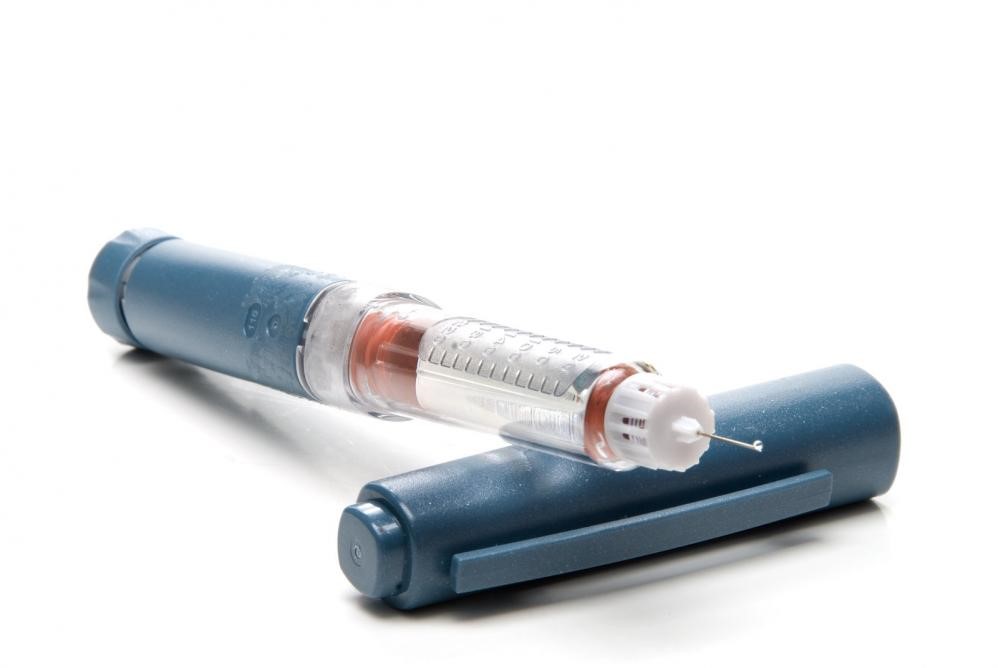Liraglutide cost
Liraglutide CostIntroduction: Liraglutide CostThe annual treatment costs of Liraglutide, also known as Victoza, can vary depending on the dosage and frequency of injections. On average, the annual cost for Liraglutide can range from $1,000 to $3,000. This cost includes the medication itself, as well as the needles and test strips needed for administration and monitoring.Patients using a GoodRx coupon for Victoza (liraglutide) may be able to save significantly on their annual treatment costs. GoodRx coupons can provide discounts of up to 80% off the retail price of prescription medications, potentially resulting in hundreds of dollars in savings for Liraglutide users.When comparing the cost needed to treat analysis for weight reduction with Liraglutide versus semaglutide, it is important to consider the overall annual treatment costs for each medication, including any additional supplies or monitoring devices required. This analysis can help patients and healthcare providers make informed decisions about the most cost-effective option for their weight reduction treatment.In conclusion, understanding the annual treatment costs of Liraglutide and utilizing resources like GoodRx coupons can help patients better manage the expenses associated with their medication. Conducting a cost needed to treat analysis can also provide valuable insights into the most cost-efficient treatment options for weight reduction with Liraglutide versus semaglutide.Liraglutide Coupons, Copay Cards and RebatesAvailable offers for Liraglutide include printable coupons, copay cards, and savings programs. Printable coupons for Liraglutide can be found on the manufacturer’s website and are typically available after completing a short registration process or questionnaire. These coupons can be used at participating pharmacies to save on the cost of Liraglutide.Additionally, some patients may be eligible for copay cards, which can help reduce the out-of-pocket costs for Liraglutide prescriptions. These cards are often available through the Liraglutide manufacturer’s website or from healthcare providers.Rebates and savings programs may also be available for Liraglutide, with specific eligibility criteria and application processes. Patients can inquire about these offers with their healthcare providers or by visiting the Liraglutide manufacturer’s website.It’s important for patients to carefully review the details and eligibility requirements for each of these offers to ensure they can take advantage of the cost-saving opportunities for Liraglutide.How Liraglutide worksLiraglutide is a medication used to help treat type 2 diabetes and obesity by regulating blood sugar levels and promoting weight loss. It works by mimicking the effects of a naturally occurring hormone in the body called glucagon-like peptide-1 (GLP-1). This hormone helps regulate insulin secretion, slows down gastric emptying, and reduces appetite. By mimicking the effects of GLP-1, liraglutide can help lower blood sugar levels, improve insulin sensitivity, and promote weight loss by reducing food intake. It also has the added benefit of reducing the risk of cardiovascular events in patients with type 2 diabetes. Overall, liraglutide works to address both the glycemic and weight management aspects of type 2 diabetes and obesity, making it a valuable treatment option for individuals struggling with these conditions.Indications and UsageSaxenda® is indicated for chronic weight management in adults with a body mass index (BMI) of 30 kg/m² or greater, or 27 kg/m² or greater in the presence of at least one weight-related comorbidity, such as hypertension, type 2 diabetes, or dyslipidemia. It is not recommended for use in pediatric patients. The recommended dosage of Saxenda is 3 mg once daily, administered subcutaneously. The dosage can be increased to 3 mg once daily after 1 week if the patient tolerates the lower dose well.Ozempic® is indicated as an adjunct to diet and exercise to improve glycemic control in adults with type 2 diabetes mellitus. It can be used alone or in combination with other antidiabetic medications, such as metformin, sulfonylureas, or insulin. The recommended initial dosage of Ozempic is 0.25 mg once weekly, which can be increased to 0.5 mg once weekly after at least 4 weeks if additional glycemic control is needed. Ozempic is not recommended for use in patients with type 1 diabetes or for the treatment of diabetic ketoacidosis.Important safety considerations for both medications include contraindications in patients with a personal or family history of medullary thyroid carcinoma or multiple endocrine neoplasia syndrome type 2, and warnings regarding the risk of thyroid C-cell tumors, pancreatitis, and hypoglycemia (for Ozempic). Close monitoring and patient education about these risks are essential.What is Liraglutide used for?Liraglutide, a GLP-1 receptor agonist, is primarily used as an adjunct to diet and exercise for weight management in overweight or obese adults. It works by regulating appetite and food intake, leading to weight loss. Studies have shown that liraglutide can help achieve clinically significant weight loss and sustain this weight loss for up to two years.The potential benefits of liraglutide in weight management include its ability to reduce food cravings, improve insulin sensitivity, and promote feelings of fullness. This can lead to long-term weight loss and improvements in overall health.However, liraglutide is not without safety concerns and contraindications. Some of the potential risks associated with its use include acute gallbladder disease, pancreatitis, hypoglycemia, and kidney injury. Patients with a history of these conditions or other significant medical issues may not be suitable candidates for liraglutide treatment.In conclusion, liraglutide is a valuable option for individuals struggling with weight management, but its use should be carefully considered in light of potential safety concerns and contraindications.How to save on Liraglutide?Eligibility criteria for patients to save on Liraglutide, such as Saxenda, include being 18 years or older, having commercial insurance, and not being eligible for Medicare, Medicaid, or any other federal or state healthcare program. Restrictions may apply, and the maximum savings amount is $200 per prescription. Patients can also check for any applicable savings programs through the Saxenda website or with their healthcare provider.Liraglutide can interact with insulin, sulfonylureas, and oral medications. Insulin or sulfonylureas may increase the risk of low blood sugar when used with Liraglutide, so patients should monitor their blood sugar levels carefully. Additionally, some oral medications may need to be adjusted when starting Liraglutide. It’s important to consult with a healthcare provider to manage these interactions effectively.For commercially insured Saxenda prescriptions,
Best anti anxiety medication for weight loss
Best Anti Anxiety Medication for Weight LossIntroduction: Best Anti Anxiety Medication for Weight LossAnti-anxiety medications are often a crucial component of managing anxiety symptoms, and some options may also have the potential to aid in weight loss. Selective serotonin reuptake inhibitors (SSRIs) are common anti-anxiety medications that work by increasing the levels of serotonin in the brain, helping to regulate mood and reduce anxiety. Some SSRIs, such as fluoxetine, have been associated with weight loss in some individuals.Benzodiazepines, another category of anti-anxiety medications, work by enhancing the effects of a neurotransmitter called gamma-aminobutyric acid (GABA), which helps to calm the brain and nervous system. While benzodiazepines are not typically associated with weight loss, they can help manage anxiety symptoms, which may indirectly support weight management.Beta blockers, often used to treat high blood pressure, can also be effective in managing physical symptoms of anxiety, such as rapid heart rate and shaking. Some individuals may experience weight loss as a side effect of beta blockers.In addition to traditional medications, some individuals may explore alternative remedies or herbal supplements for anxiety, such as kava, valerian root, or passionflower. It is important to discuss these options with a healthcare professional, as they may interact with other medications or have potential risks.In summary, while certain anti-anxiety medications may have the potential to aid in weight loss, it’s important to work closely with a healthcare provider to find the most effective and safe treatment approach for managing anxiety symptoms.Anti anxiety medications for Weight LossMany people struggle with anxiety and the side effects it can have on their physical health, including weight gain. In response, some individuals may turn to anti-anxiety medications that are known to have weight loss as a potential side effect. While these medications may seem like a quick solution, it’s important to carefully consider their potential impact on overall health and well-being. Understanding the mechanisms and risks associated with anti-anxiety medications for weight loss can help individuals make informed decisions about their treatment options.How does Bupropion make you lose weight?Bupropion, commonly known by the brand name Wellbutrin, is an antidepressant that has been found to promote weight loss through its unique mechanism of action. Unlike other antidepressants that may cause weight gain as a side effect, bupropion has been shown to have a stimulating effect on pro-opiomelanocortin (POMC) cells in the hypothalamus. POMC cells regulate appetite and energy balance, and bupropion’s stimulation of these cells can lead to reduced food intake and increased energy expenditure, ultimately resulting in weight loss.In 2014, the FDA approved bupropion for weight loss based on its ability to help individuals achieve and maintain a healthy weight. This approval makes bupropion different from other antidepressants, as it is the only one to receive FDA approval specifically for weight loss.Healthcare professionals may consider prescribing Wellbutrin as a weight loss aid for individuals with depression who are also concerned about weight management. However, it is important to be aware of potential risks and precautions, such as the possibility of increased risk of seizures and potential interactions with other medications. Before using bupropion for weight loss, individuals should consult with a healthcare professional to determine if it is a suitable and safe option for them.Benefits of BuproprionBupropion, commonly known by the brand name Wellbutrin, offers several benefits for individuals suffering from depression. It is an effective antidepressant that works by increasing the levels of certain chemicals in the brain that help improve mood and feelings of well-being. Additionally, bupropion has been found to have potential weight loss effects, making it a desirable option for individuals who may be concerned about weight gain as a side effect of other antidepressants.Furthermore, bupropion is also available in combination with naltrexone as the drug Contrave, which has been approved by the FDA for weight loss. The combination of bupropion and naltrexone in Contrave works by reducing appetite and cravings, making it an effective option for individuals looking to manage their weight.In summary, bupropion offers dual benefits of effectively treating depression and potential weight loss effects. Its approval as a component of Contrave by the FDA further solidifies its effectiveness in weight managementRisks of BuproprionBupropion, also known by the brand name Wellbutrin, has potential risks and side effects that individuals should be aware of before taking this medication. Common side effects may include dizziness, headaches, and changes in appetite. More serious side effects can include seizures, hallucinations, and changes in heart rate. It’s important to note that anyone experiencing these serious side effects should stop taking bupropion immediately and seek medical attention.The FDA has issued a warning regarding the increased risk of suicide and unpredictable mood changes associated with bupropion, especially in younger individuals. It’s crucial for patients to be aware of these potential risks and to discuss any concerns with their healthcare provider before starting this medication. If you or someone you know is taking bupropion and experiences any concerning side effects, it’s important to seek medical help right away. Being informed about the potential risks and side effects of bupropion is essential for making a well-informed decision about medical treatment.Antidepressant medications for Weight LossIntroduction:Antidepressant medications are often prescribed to help individuals manage symptoms of depression and anxiety. However, it is important to note that in some cases, certain antidepressants may also have side effects related to weight. This article will explore the potential impact of antidepressant medications on weight and discuss the factors to consider when it comes to weight loss and antidepressants.Potential Impact on Weight:Some antidepressant medications have been linked to weight gain, while others may have the potential to cause weight loss. The effect on weight can vary depending on the specific medication and individual factors such as metabolism and lifestyle. It is important for individuals to be aware of the potential impact of their antidepressant medication on their weight and discuss any concerns with their healthcare provider.Considerations for Weight Loss:For individuals who are taking antidepressant medications and are seeking to manage their weight, it is important to approach weight loss in
Wegovy Reviews
Introduction: Wegovy ReviewsWegovy, a relatively new weight loss medication, has received mixed reviews from patients on various platforms such as drugs.com and Reddit. Positive reviews often highlight significant weight loss results and improved overall health. One patient on drugs.com reported, “I’ve lost 30 pounds in 4 months and my energy levels have skyrocketed.” Additionally, many users praised the medication for curbing their appetite and cravings, leading to successful weight loss journeys.On the other hand, negative reviews raise concerns about side effects, including nausea, diarrhea, and headaches. Some users on Reddit shared their discomfort with the injection process and experienced mood swings while taking Wegovy. A user mentioned, “The side effects were too much for me to handle, and I had to stop using it.”In conclusion, Wegovy’s reviews are a mixed bag, with some patients highlighting its effectiveness in weight loss and appetite control, while others express concerns about side effects and the injection process. Individual experiences with Wegovy vary, emphasizing the importance of consulting with a healthcare professional before starting this medication.Wegovy User Reviews & RatingsIntroduction: Wegovy is a prescription medication used for weight management in adults who have obesity or who are overweight and have weight-related medical problems. This article will explore user reviews and ratings of Wegovy to provide insight into the experiences and satisfaction of individuals using this medication for weight loss.Users of Wegovy have reported significant weight loss and improvements in their overall health. Many have shared positive experiences, citing Wegovy as a powerful tool in their weight management journey. Some users have noted impressive results in a relatively short period, expressing satisfaction with the medication’s effectiveness. Reviewers also frequently mention the support they received from healthcare professionals in monitoring their progress and adjusting their treatment plans as needed. However, some users have reported experiencing side effects such as nausea, diarrhea, and constipation, which have impacted their overall experience with Wegovy. Additionally, cost and insurance coverage have been listed as barriers for some individuals considering or using Wegovy. Overall, user reviews and ratings of Wegovy provide valuable insights into the real-world experiences of individuals using this medication for weight management.Most voted positive reviewI have found Wegovy to be incredibly effective for my weight loss journey. The main reasons for its effectiveness are the significant decrease in my appetite, leading to reduced food cravings and overall calorie intake. This medication also boosted my metabolism, allowing me to burn more calories throughout the day. The most common side effect I encountered was nausea, which I managed by eating smaller, more frequent meals and staying hydrated.I started seeing results within the first month of using Wegovy, and over 6 months, I lost a total of 30 pounds. My tip for others considering Wegovy is to stay consistent with taking the medication, follow a healthy diet, and incorporate regular exercise. It’s important to listen to your body and communicate any side effects with your healthcare provider. Overall, Wegovy has been a game-changer for my weight loss journey, and I highly recommend it to anyone struggling to shed extra pounds.Most voted negative reviewI recently had a disappointing experience with trying to obtain insurance coverage for Wegovy, a new weight-loss medication. Despite having insurance, the medication was not covered due to its high out-of-pocket cost of $3500. Even with a $25 discount coupon, the cost remained unaffordable. This left me no choice but to switch back to a more affordable pill option.The specific reasons for the insurance not covering Wegovy were not provided, but it seems that the high out-of-pocket cost was the main issue. The $25 discount coupon provided by the manufacturer was ineffective in making the medication affordable. As a result, the nurse practitioner and I decided it was best to switch back to a more affordable pill option that was covered by insurance.In the future, it would be beneficial for insurance companies to reconsider covering medications like Wegovy, which have shown to be effective in weight loss, and for manufacturers to provide more substantial discounts to make these medications more accessible to those who need them.Frequently asked questionsI have been using Wegovy for the past few months and have experienced great success with weight loss. I did encounter some side effects such as nausea, headache, and diarrhea initially, but they subsided after a few weeks. It took about 6 weeks for me to start seeing noticeable weight loss results.Comparing Wegovy with other weight loss medications, I found it to be more effective in suppressing my appetite and reducing cravings. It also helped me to feel fuller for longer periods, which contributed to my overall weight loss success.I have faced some challenges and plateaus in my weight loss journey, especially when my progress seemed to stall. To address this, I made adjustments to my diet and exercise routine, as well as staying consistent with taking Wegovy as prescribed. Overcoming these plateaus required patience and perseverance, but ultimately, I was able to break through and continue making progress toward my weight loss goals.Wegovy Reviews From RedditReddit users have shared a range of experiences with Wegovy, a prescription weight loss medication. Some users reported significant weight loss results, with one user claiming to have lost 20 lbs in just two months. Others mentioned feeling less hungry and having more energy, leading to successful weight loss journeys.On the other hand, some users experienced side effects such as nausea, vomiting, and diarrhea. One user reported feeling “worse than ever” after using Wegovy due to intense stomach issues. Despite this, many users expressed overall satisfaction with the medication and its effectiveness in aiding weight loss.Overall, reviews on Reddit for Wegovy are mixed, with some users praising it for its successful weight loss results and others cautioning about potential side effects. It’s important to note that individual experiences with the medication can vary, and it’s important to consult with a healthcare professional before starting any new weight loss regimen.Wegovy Reviews from QuoraWegovy users on Quora have shared their weight loss journeys while using the medication.









